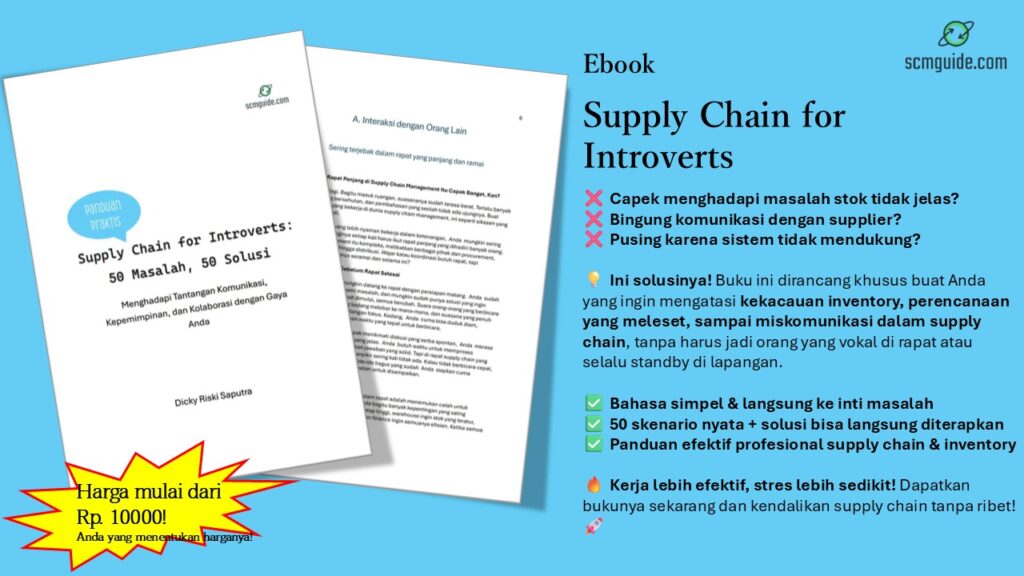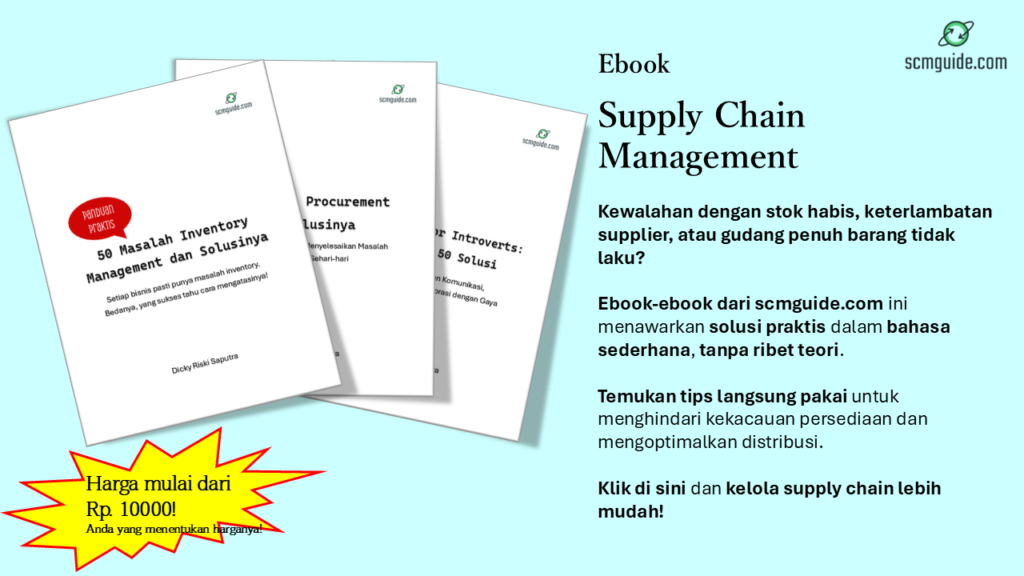In today’s fast-paced business environment, staying competitive is no longer just about keeping up with the times; it’s about setting the pace.
As a supply chain professional, you understand this better than most, as you play a critical role in ensuring products flow efficiently from manufacturers to consumers.
To accomplish this, you often rely on Enterprise Resource Planning (ERP) systems.
However, it’s not enough to simply claim you’re using an ERP system; it’s essential to leverage it to its full potential.
In this blog post, we’ll explore why relying on an ERP solely for data recording falls short of its capabilities and how you can harness the power of ERP to drive efficiency and automation.
Before we go further into this topic, don’t forget to follow my LinkedIn account. You’ll get more helpful insights on supply chain management there.
Table of Contents
The Illusion of ERP Usage
Many organizations claim to have implemented ERP systems, boasting about their ability to manage data, streamline processes, and improve overall efficiency.
However, the reality often falls short of these lofty promises.
In many cases, these ERP systems are used as glorified databases, serving little more than data recording repositories.
What’s worse, manual data input through typing and the persistent use of paper documents are still prevalent in these organizations.
So, the question arises, is this the best you can get from ERP?
ERP Beyond Data Recording
ERP systems are designed to be comprehensive tools that can transform the way an organization operates.
They encompass various modules, such as finance, human resources, production, and supply chain management.
Within the supply chain domain, ERP systems hold immense potential for automation, optimization, and improved efficiency.
Let’s delve into some of the key reasons why relying solely on ERP for data recording is a missed opportunity.
You might also like:
- What are the Differences in Skill Sets Required for Automotive and FMCG Supply Chain?
- 15 Ways to Create a Transparent Supply Chain
Streamlined Processes
One of the primary benefits of an ERP system is the ability to streamline processes.
You should look beyond the manual input of data and consider how these systems can automate tasks.

ERP software can optimize inventory management, automate order processing, and facilitate demand forecasting.
By doing so, it eliminates bottlenecks, reduces lead times, and ensures a smoother and more cost-effective supply chain.
Enhanced Data Visibility
While using an ERP system for data recording does provide some data visibility, it falls far short of the real potential.
A fully integrated ERP system provides real-time data visibility across the supply chain.
This visibility enables you to make informed decisions quickly, ensuring that operations run smoothly.
Waiting for manual data input and paper documentation significantly delays decision-making processes.
Efficiency and Accuracy
Automation through ERP systems reduces the risk of human error that often accompanies manual data entry.
Barcode scanning and automated data capture ensure that data is accurate and consistent.
This accuracy is essential in supply chain management, where even the smallest errors can lead to costly disruptions.
Cost Reduction
Optimizing the supply chain through ERP automation doesn’t just boost efficiency; it also reduces costs.
By minimizing manual labor, decreasing errors, and improving inventory management, you can significantly cut operational expenses.
Improved Communication
An ERP system is a central hub for data and information. It fosters improved communication and collaboration among different departments within an organization.
You can easily share information with colleagues in sales, procurement, and manufacturing, leading to better coordination and quicker problem resolution.
Data Analysis and Reporting
ERP systems offer powerful data analysis and reporting capabilities.
By utilizing these features, you can gain insights into historical performance and forecast future trends.
This data-driven approach empowers you to make informed decisions and drive continuous improvement.
You might also like:
- How to Strike a Balance: Automation vs. Human Power in the Supply Chain
- The Complete Guide to Creating Useful Item Codes for Efficient Material Management in ERP Systems
Embracing Technology in Supply Chain Management
As a supply chain professional, it’s your responsibility to push the boundaries of what your organization can achieve with an ERP system. Here’s how you can ensure you’re not settling for mere data recording:
Evaluate Current Processes
The first step is to conduct a thorough review of your organization’s current processes.
Identify areas where manual input is still prevalent and paper documents are widely used.

Understand the bottlenecks and inefficiencies in these processes.
This evaluation will serve as the foundation for improvement.
Identify Areas for Improvement
Once you’ve assessed the current state, pinpoint the areas that can benefit from automation and ERP utilization.
Common candidates for improvement include order processing, inventory management, and demand forecasting.
By automating these processes, you can achieve remarkable efficiency gains.
Invest in Training
It’s not enough to have a powerful ERP system; your team needs to be proficient in using it.
Invest in training to ensure that your staff can maximize the system’s capabilities.
Well-trained personnel are more likely to embrace technology and drive its utilization throughout the organization.
Set Clear Objectives
Establish clear objectives for the utilization of your ERP system.
Define what success looks like for your supply chain operations. Whether it’s reducing lead times, improving order accuracy, or cutting costs, having clear goals will drive your team towards tangible outcomes.
Monitor Progress and Adapt
The implementation of an ERP system isn’t a one-time effort; it’s an ongoing journey.
Continuously monitor the progress and performance of the system.
Collect feedback from your team and adapt your processes as needed.
Technology is dynamic, and your utilization of ERP should evolve with it.
Promote a Culture of Improvement
Don’t stop at achieving initial improvements. Foster a culture of continuous improvement within your supply chain team.
Encourage innovation and embrace new technology as it becomes available.
Technology is an enabler, and it should support your quest for excellence.
Conclusion
Relying on an ERP system solely for data recording is a wasted opportunity in today’s dynamic supply chain environment.
As a supply chain professional, you have a pivotal role in leveraging technology to streamline processes, improve efficiency, and drive automation.
By reevaluating your organization’s approach to ERP utilization, you can unlock the full potential of these powerful systems.
Remember, the supply chain is a complex network of interrelated processes, and even small improvements can have a significant impact on your organization’s overall performance.
Don’t settle for the status quo.
Embrace technology, push the boundaries, and continually seek opportunities for improvement.
In doing so, you’ll not only stay competitive but also lead the way in the ever-evolving world of supply chain management.
I hope you find it helpful!
Please share this article with your colleagues so they can also benefit. For more insights on supply chain management, follow my LinkedIn account. You’re free to use all articles on this blog for any purpose, even for commercial use, without needing to give credit.

 by
by 



